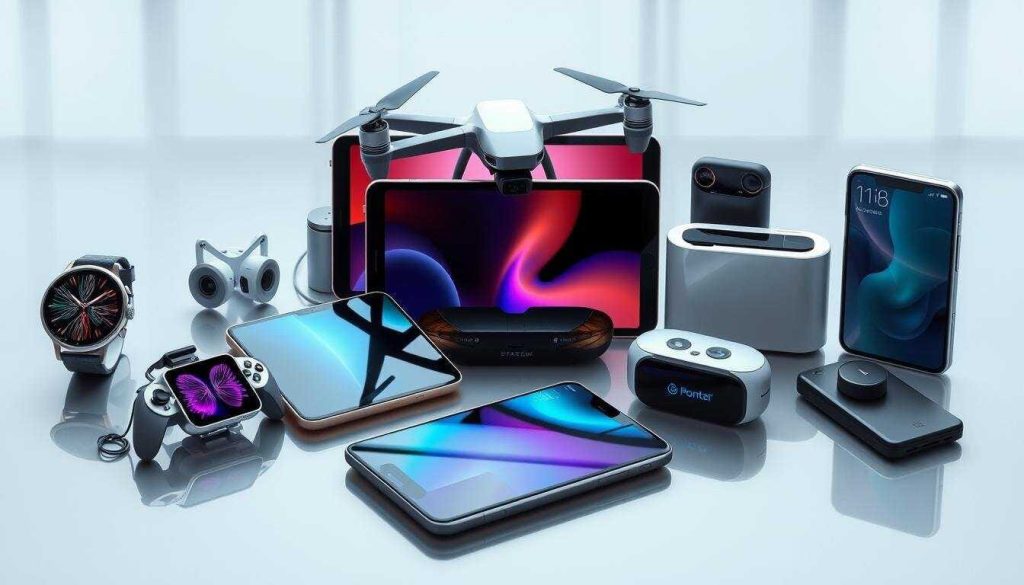Every year, new tech products make headlines, but only a few actually change how people live or work. The difference between novelty and utility is sharper than ever in 2025. Some gadgets win attention for design or marketing, while others quietly integrate into daily habits. And just as people spend their breaks scrolling or playing something like the lucky 7 game online, many of these new tools find their place in similar casual moments—simple, repeatable, and practical.
The real story this year is not about futuristic promises. It’s about everyday usefulness.
The Shift from Hype to Habit
The technology landscape has matured. Consumers are no longer impressed by voice control or AI-powered assistants alone. They want devices that reduce friction—less charging, faster syncing, and more compatibility with what they already own.
This shift toward utility means many 2025 gadgets focus on integration rather than invention. A new generation of smart home systems, for example, connects multiple devices without the constant need for separate apps or updates. People value things that “just work” more than things that surprise them once and gather dust later.
Even in personal tech, the trend is subtle: tools that serve without drawing attention. Devices that learn routines, anticipate needs, and adapt silently in the background define this new phase.
Wearables That Finally Earn Their Place
After years of trial and error, wearable technology is finding its balance. Fitness and health monitoring still lead the category, but users are now more selective. They don’t want another notification machine; they want insight.
Some of 2025’s most practical wearables are designed around health metrics that matter—sleep quality, stress indicators, and simple posture feedback. Many of them use compact sensors and improved battery systems that last for days rather than hours. The difference isn’t dramatic in appearance, but it’s meaningful in function.
Work-related wearables are growing too. Professionals now use discreet earpieces that translate speech in real time or record meeting notes automatically. This kind of incremental improvement—useful but not flashy—is what defines the 2025 gadget market.
Portable Power and Energy-Saving Devices
The rise of remote work and outdoor lifestyles has expanded the need for portable power. Lightweight solar panels, compact battery packs, and even self-charging devices are in focus.
In 2025, several manufacturers are experimenting with micro energy systems that store small bursts of power from movement or ambient heat. The technology is still developing, but the idea is catching on. It connects to a larger social trend: personal energy independence.
At home, energy-saving tools have become more adaptive. Smart plugs and lighting systems adjust automatically to reduce consumption during off-hours, learning usage patterns rather than relying on manual schedules. These gadgets appeal to both eco-conscious users and those simply trying to cut costs.
Screens That Bend, Fold, and Float
Flexible screens, once a novelty, are now appearing in more places than expected. Foldable tablets and portable displays are becoming common tools for creative professionals, teachers, and field workers who need lightweight multitasking devices.
The next frontier seems to be modular screens—panels that connect magnetically or wirelessly to form larger surfaces when needed. This makes displays less like single-purpose objects and more like building blocks for work or entertainment.
Another emerging feature is “ambient display” mode, where screens shift from showing detailed content to serving as soft lighting or low-energy information surfaces. These designs aim to blend into daily environments rather than dominate them.
Smart Kitchens and Everyday Automation
Household technology continues to evolve, but not in the overly complicated way many predicted. Instead of robotic arms or voice-controlled everything, 2025’s kitchen gadgets focus on measurement, timing, and waste reduction.
For example, new cooking devices automatically weigh ingredients and adjust heat based on recipe data. Storage containers now track food freshness through small sensors. This data-driven approach reduces waste and improves planning—quiet efficiency over spectacle.
The broader idea is that automation should feel natural, not forced. People don’t want to manage another dashboard or learn a new app every month. They want help with routine tasks, not a constant reminder of technology’s presence.
The Emotional Side of Gadgets
Interestingly, many new devices address emotion rather than productivity. Stress management tools, mood lighting, and personal reflection aids now form a niche market of their own. Small, screen-free objects that guide breathing or track calm moments show that digital well-being is becoming a serious topic.
This marks a change in how people view technology—not as something to escape from, but something that can quietly support better mental states if designed with care.
Looking Ahead
If there’s a theme to 2025’s technology, it’s restraint. The most successful gadgets are not those with the most features but those that solve small, recurring problems effectively.
The conversation around innovation is also shifting. Instead of asking “What can it do?”, people now ask “Will I actually use it?” This mindset could redefine the next generation of consumer products.
For developers, it’s a reminder that the most transformative ideas may not look revolutionary at first glance. They may start with the simple goal of improving a few minutes of someone’s day—and that’s enough to make them matter.

